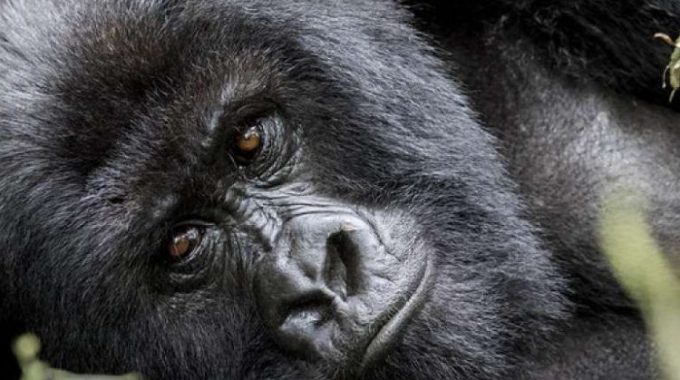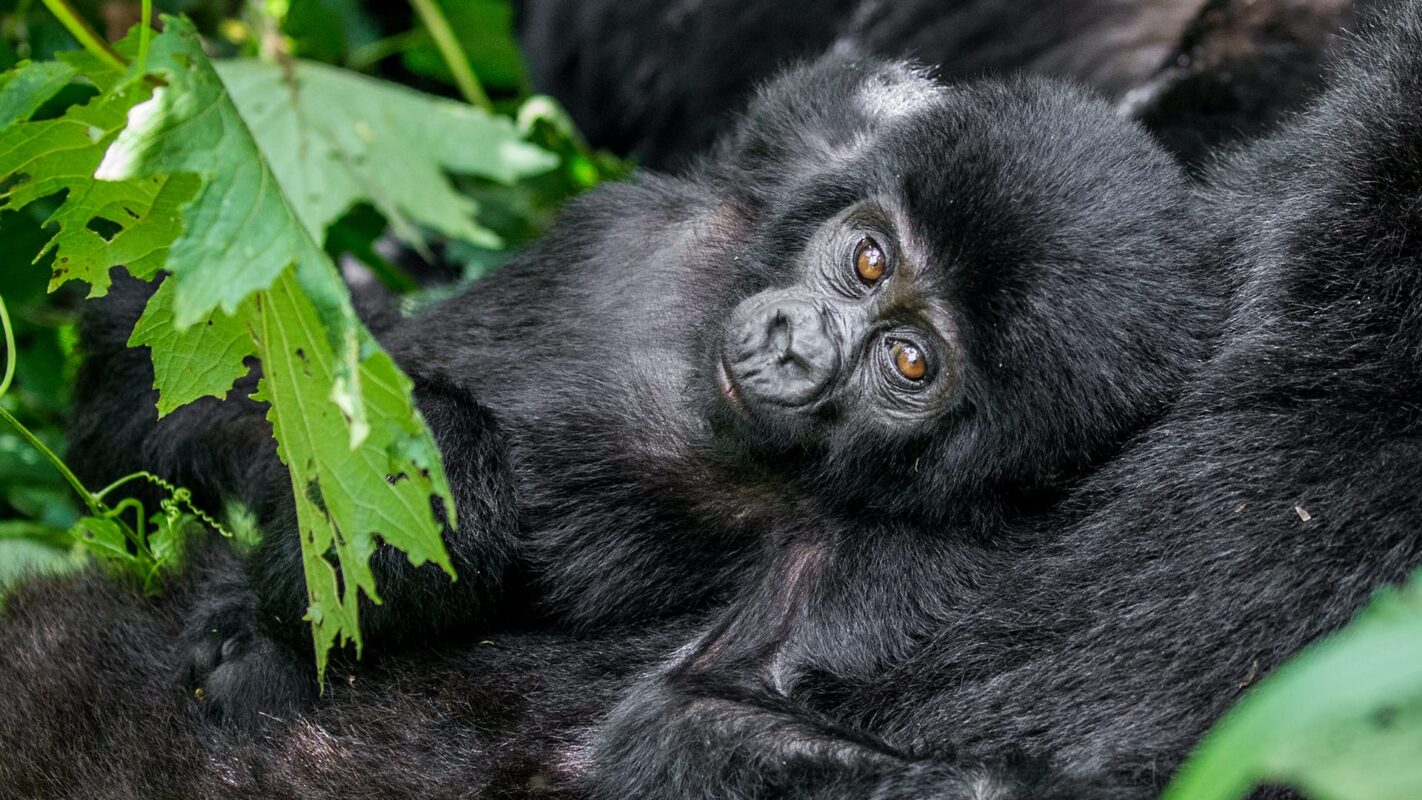
FAQs About Gorilla Trekking Adventure
FAQs About Gorilla Trekking Adventure
According to David Attenbrough, spending time with gorillas in the wild is the greatest wildlife encounter on earth. Mountain gorillas are rare species of the gorilla family only found in the rainforest Virunga Mountains which straddle the border between Rwanda, Uganda and Democratic Republic of Congo.
About Gorilla Trekking
Trekking for mountain gorillas in the mountainous rainforests means hiking on the steep, narrow footpaths and walking through dense jungle for hours, behind a ranger guide who slashes a path through the foliage with a machete.
For a comfortable gorilla trek you need to be at least walking fit, the guides ensure you take plenty of breaks and properly equipped for a tough environment. We recommend hiking books (you have tried) that protect your ankles, double-layered socks (cotton inners and thick outers) plus knee-high gaiters.
Note: Be aware that gorillas are highly susceptible to human illness, so you will not be allowed to participate in the gorilla trek if you have a cold or any other contagious illnesses like flu and cough.

When to Go Gorilla Trekking
Uganda and Rwanda share the same climatic conditions. Although gorilla trekking is considered a year-round activity, the best time to visit the rainforests is during one of the two dry seasons. December to February and early June to late September are the best times of the year for gorilla trekking, these periods are the most comfortable for trekking, but still, conditions are still very humid and wet with plenty of mud, so don’t forget your gaiters.
Rain plays an essential part of the precious ecosystem in the Congo Basin’s equatorial rainforest and its seasons can be aptly described as wet, wetter and wettest. Due to the low rainfall seasons running from June to September and the gentle rainfall, gorilla trekking in Congo is easier. From December to February and July to August is considered the least wet and coolest time of the year.
Frequently Asked Question about Gorilla Trekking Adventure
- Is seeing the Gorillas Guaranteed?
Because gorillas are closely monitored by a team of trackers, researchers and other experts. Chances of seeing them are 99%, the trekkers and researchers are in touch with them every day and guides know more or less where they different families area. Since gorillas are wild animals, there are no guarantees and an overnight thunderstorm or an unexpected encounter with a predator such as lion may cause the troop to move unexpectedly in a completely different direction. But is more likely that scouts will pick up their trail again soon. It is very seldom that travelers don’t find these gentle apes during a gorilla trekking expedition in Africa.
While in the rainforests, when you find a gorilla family your ranger will ask you to leave everything but your camera. He will then direct you close enough to observe the gorillas intimately without threatening them. There are no fences between you, only mutual respect.
Mountain gorillas visited on a gorilla trekking adventure are habituated to human presence and go about their daily lives like you are not there, foraging, grooming and napping with no fear. The youngsters are always curious about humans and often have a playful altitude that tests the patience of their teenage gorilla babysitters.
The nature of a gorilla family is mesmerizing to see, but remember that your presence is shrewdly observed by the patriarch of the family; the dominant silverback.
Note: Don’t spend most of your time taking photos and videos of gorillas, at least spend 20 minutes just observing them, you will come away with a far greater sense of having experienced gorillas in their natural habitat.
- Can I Touch the Gorillas?
Absolutely No, you cannot touch the gorillas. Although we completely understand the instinct to want to reach out and cuddle a furry baby, you cannot touch them as they are wild animals thus very strong and unpredictable, so you could be severely injured.
Also, gorilla populations are already under severe threat from logging, poaching and human encroachment on their natural habitat and they are highly susceptible to human diseases. You cannot interact with the gorillas and you have to keep a distance of at least seven meters (22 feet) at all the time, and in some instances, wear a face mask. If you are ill, you will not be allowed to go on a gorilla trek, so ensure you are in excellent health before you travel and take precautions not to pick up a bug on the flight over.
Remember, once you find the endangered mountain gorillas, you are only allowed an hour with them so as not to cause them distress. This passes by in a flash, so don’t spend all your time on your camera, make time to just watch, be grateful that you have the rare privilege of seeing these gentle apes in the wild.
- Is using a Porter Necessary?
We advise you to use a porter if you are offered their services during your gorilla trek, even if you feel you are fit enough to cope with the terrain, altitude, humidity and you daypack.
For a nominal amount of amount of around USD 20, you will be provided a livelihood to several inhabitants of the nearby village. Porters are often former poachers, without work and the ability to earn a living within gorilla conservation, many will be forced to return to capturing or killing gorillas for bush meat or the illegal wildlife-trafficking trade. The incentives offered by poaching syndicates can be very lucrative for impoverished villages with few other ways of earning a living. It is better to gracious accept their help and pay the little fee, which will amount to a couple of coffee back home and help ensure the continued conservation of gorillas.
Remember, every legally employed person in Africa supports seven to nine other people. There can be no successful conservation without involving the local people as much as possible, so the more porters you can hire, the better.
- How Fit Do I Have to be?
Gorilla trekking is a strenuous activity, so the fitter you are, the better. However, it doesn’t mean that you need to be an athlete or body builder to go Africa gorilla trekking.
Trekkers will be divided into groups of 8 people of the similar age and fitness levels, and the oldest and least fit people will generally be allocated the gorilla family that is nearest to the starting point. If you are tracking as a group or family, you won’t be splint up from family members or friends. Also, obeying the golden rule of trekking, the fastest walker will have to slow down to the pace of the slowest so that the group stays together safely.
The fittest or youngest people will be chosen to find the group furthest away. Your guides are very experienced in assessing how the group is coping and will stop when necessary for a break, to drink water, admire a view or even have a snack. Packed lunches contain water and perhaps energy-rich items like roasted cashews or peanuts, bananas, apples, chocolate bars, muffins, small sandwiches or bread rolls and local treats like “rolled eggs” – a kind of omelette eaten cold.
In the dry season the treks are always easy and in the wet season, the mud can make the trails slippery and the trek tougher. Also, the primates seek refuge from the rain in nests or trees, making them harder to find and see. Carry lightweight binoculars with you to for closer views of the antics and expressions of gorillas into focus.
Note: not all gorilla families will be lolling around, munching leaves and basking in the sunshine, some will be on the move. And they are a lot better adapted to moving through their rainforest home than we area, so you will need to be able to keep up.
- Can Children Go Gorilla Trekking
In Rwanda, Uganda and the Congo, the minimum age for gorilla trekking is 15 years. This restriction is put in place due to several factors.
- Children may find it challenging to remain calm if a gorilla mock charges during a trekking expedition. While wild mountain gorillas rarely charge, it can happen if they feel threatened. However, an experienced and calm tracker can often deter a charging gorillas. Unfortunately children may become terrified, scream, or be inclined to run when faced with the intimidating bark of a 397 pound silverback. In such situations, a charging gorilla will typically give chase to a running tourists.
- Children pose health risks during African gorilla trekking safaris, as their developing immune systems make them more susceptible to contagious diseases like flu. Since these diseases can be transmitted to gorillas, the consequences can be severe and potentially fatal.

Baby Mountain Gorilla - Children have limited stamina which can make it arduous for them to complete the entire trek. This is particularly relevant in Volcanoes National Park in Rwanda and Uganda’s Bwindi Impenetrable National Park, where gorilla trekking involves traversing steep mountain slopes and demanding terrain. The activity requires a certain level of fitness and determination, which mature travelers are more likely to posse. Generally adults are better prepared to handle challenges like muddy trails, insects, thick forests and steep inclines.
Gorilla trekking is guided by strict regulations, these rules are design to protect the gorillas, the trackers and guides as well as the trekking tourists. These include maintaining a minimum distance of seven meters (22 feet), following instructions from park from park guides, speaking in low voices, avoiding direct eye contact with gorilla and never tempting to touch them.
Following these regulations is crucial to ensure the well-being of these primates and the safety of trekking groups. If you are traveling with youngsters, we recommend booking your stay at a lodge that offers childminding services, special programs for kids, or even safe and child-friendly forest walks.
